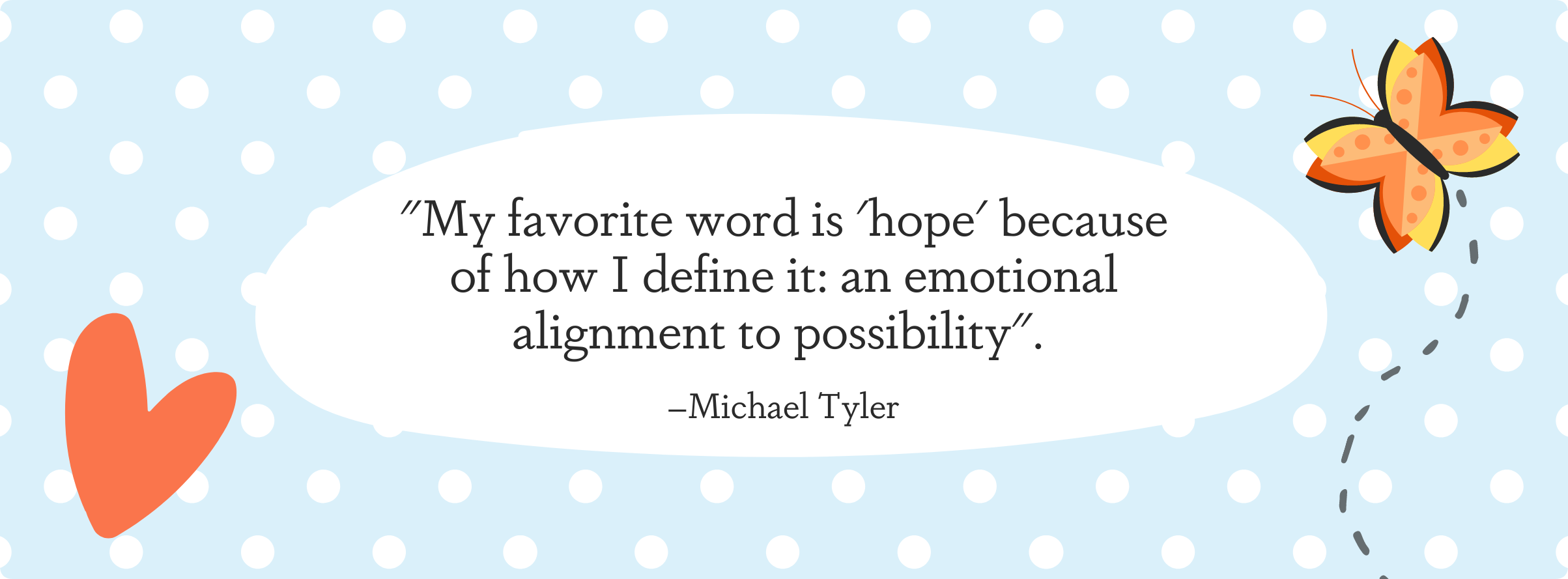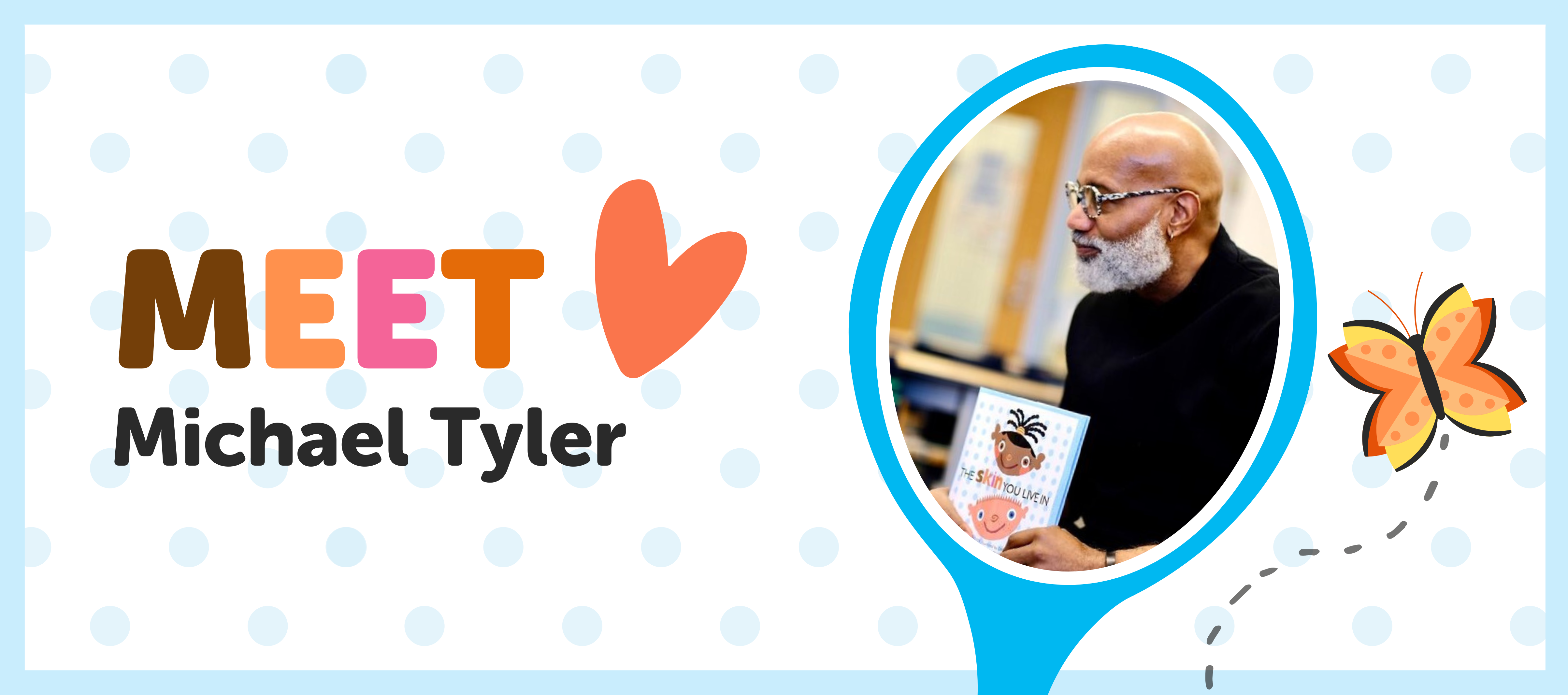This month, Beanstack is partnering with Califa and BiblioLabs for California schools and public libraries to offer The Skin You Live In book challenge for PreK–5 readers. This imaginative picture book provides parents and educators a wonderful way to explore race, inclusion, and other social and emotional concepts with young readers. Published by the Chicago Children’s Museum in 2005, The Skin You Live In uses striking, whimsical illustrations by David Lee Cscisko paired with author Michael Tyler’s playful language to discuss important global issues and promote self acceptance.
We’ve interviewed author Michael Tyler to learn more about him, his process as a writer, and what impacts his work. Check out excerpts from our interview with him below, and learn more about his work here! You can also follow Michael on Twitter and Instagram.
What are you currently reading?
I’m reading the only Toni Morrison book I’ve yet to read, The Bluest Eye.
Where is your favorite place to read?
I have a piece of furniture called “The Cloud” couch, in our family room. It’s as comfortable as it sounds. It’s my favorite place to read, write, think…nap, which I sometimes struggle to avoid while floating on “The Cloud.”
What is your favorite thing you've written? Book or otherwise!
This is a very difficult question to answer, given how much I’ve written through the years. Three things do come to mind. The first is a poem from my book, Sow the Seeds, titled What I Have Become. The second is The Skin You Live In. Lastly, I’ve co-authored a manuscript with an educator named Carlos Mendez, which is a LGBTQIA+ themed children’s book. My youngest son identifies as gay, and throughout his childhood, I longed to write a book for a child like him, but never wanted to do so and be perceived as “heterosplaining.” I decided that I would only write such a book, if I could do it with someone from the queer community. As a K-1, LatinX educator, I was fortunate to find the perfect person to finally do so. We are currently seeking publication for the book. I hope it will be out soon. It ranks amongst my most beloved works.
What’s your favorite book by someone other than yourself?
My all-time favorite book is The Little Prince by Antoine de Saint-Exupéry. I first read it at age 8. It’s the book that made me decide, at that young age, to become a writer.
What is your favorite word and why?
My favorite word is “hope” because of how I define it: an emotional alignment to possibility. Where one sees no possibility, one is hopeless, and hopelessness is the single most defeating and depleting mindset for anyone to have. No matter how small it might be, always choose to see and pursue the possibility. The most improbable and unlikely things that have ever happened in history happened because individuals had this perspective.
What do you think makes a good story?
I can only answer this based upon what I enjoy from reading. First, the subject must be one that I’m either greatly interested in, or one that provokes a tremendous degree of curiosity within me. For this reason, I often read about people, places and things that are completely foreign to my experiences and my frame of reference.
Next, the writing needs to be in-depth and detail–oriented. When it comes to nonfiction, I want to learn as much as I can about the subject. When it comes to fiction, I want to have all my senses involved. I prefer books and stories that have a cinematic quality and that infuse their characters with complex and conflicting traits. I’m also more drawn to books whose authors “paint” from a broad vocabulary palette. I am a lover of words and celebrate when they are brushed from the pen with an extensive range and are used inventively. I want to read what I wish I could have written. Finally, I want to read a story that feels complete when I’m done, that there is nothing left to be read about it.

When did you first realize you wanted to be a writer? And/or how did you become a writer?
The process of how I became a writer, aside from my mother’s encouragement and support, began with my fifth-grade teacher, Mrs. Smalls. She was the first person to tell me that I could have a career as a writer, and she made me believe it. Then it was my mother’s first cousin, Jimmy Rivers, who took me to the next level. When I was fifteen, he sat me down and instructed me to do a “Crazy 15” every night. When I asked him what that was, he explained it as a writing exercise I was to do each night before going to bed. It required me to write for fifteen minutes without stopping. When I asked Jimmy why I should do this, he told me that the human eye processes a thousand bits of stimuli a second and that our brains store everything we see; and that much information swirling around in your head is enough to make anyone crazy; to get clarity for your destiny, you must write the crazy out of your thoughts. From that day on, August 13, 1973, I have written every day. There is an adage that says, “writers write.” Jimmy got me to do that.
If you could give one piece of advice to an aspiring writer, what would it be?
There are many helpful hints to offer, like “writers write,” “write every day.” However, what I would advise most is to develop as expansive a vocabulary as you can. Consider the analogy I used previously. Words to a writer are like pigments to a painter. The more you have available, the more completely you can convey your creativity and intention. Words are both a tool and currency for committing to paper what is conceived in the mind.
What inspired you to write The Skin You Live In? How did its reception shape your work?
When my eldest son was 5, he came home from school one day having suffered his first experience of racism. There I was, trying to comfort him while also trying to explain the irrationality and complexity of racism. I struggled to find the words that his young mind would comprehend. So, I told him that I would look for a children’s book to read to him, that could help us have a conversation about his experience and about discrimination. I spent the next two weeks in search of such a book.
After reading 347 books, none of which I thought treated the subject with any nuance or lasting impact, I decided that I had to write it. What followed was a ten-year effort that dealt me 147 rejections from publishers, before I took the manuscript to the Chicago Children’s Museum and pitched it as the first book they could publish. Fortunately, the museum did. Since then, 16 years later and now in its 15th printing, the book’s reception has both rewarded my effort and validated my perspective that we must deconstruct discrimination, especially racism, with a direct appeal to the conscience and character of our children by simply stating that this is what skin is and this is what it is not.
How does your work encourage conversations around race, inclusion, and other social and emotional concepts with parents, educators, and young readers?
The Skin You Live In accomplishes this by delivering its message with the ease of a nursery rhyme. The use of verse offers a melody that aids memory and invites repeat readings. The book also purposely avoids mention of historical accounts and incidents that always trigger the antagonistic emotions that prevent meaningful progress, when seeking conversations to overcome bigotry. I wanted the narrative to have a contemporary focus that would be both timely and timeless.
Lastly, I wanted to tender a message of acceptance, which is not at all synonymous with tolerance – something our society often promotes as a moral virtue. I find nothing virtuous or laudable about promoting a conduct that instructs us to only endure what is different, without removing the malignant disdain projected onto benign differences. Acceptance goes much further, as it instructs us to recognize, acknowledge and affirm the universal value and humanity of all people. For these reasons, I think the book has worked well as a resource that brings ease to the difficulty of such conversations.
Any additional information or fun facts?
Well, it might be surprising for many to learn that I am an avid baker and will boast of making the best cookies in the world. In fact, if you read the back cover flap of my book, you will learn of my dream to one day bake a cookie for everyone in the world! This stems from advice my grandmother once gave me: if you feed someone, you’ll have a friend for life. I’m also a jazz aficionado, and the answer to the question I often get, about who my favorite jazz artist is – Thelonious Monk. Two more “fun facts”: 1. I once tried to break the world’s record for sit-ups; couldn’t get past 11,000 though, so I never broke the record. 2. I once did 50 miles on an elliptical, as a fundraising event – that’s nonstop for just under 8 hours. Never again.
ABOUT MICHAEL TYLER
Michael Tyler is a published author, accomplished speaker and sought-after thought leader dedicated to promoting acceptance and social transformation through his books, commentaries and orations.
His work focuses on promoting acceptance and self-love for kids, as well as content meant for older audiences including social/political commentaries, position pieces and perspectives. Learn more
